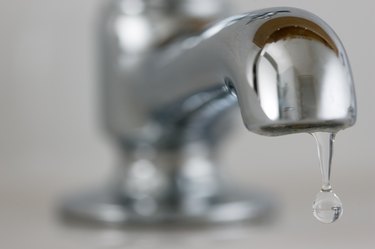Confirmed Techniques for Solving Low Water Pressure in Your Home
Confirmed Techniques for Solving Low Water Pressure in Your Home
Blog Article
They are making a number of great annotation about 4 Ways to Troubleshoot Low Water Pressure as a whole in the content which follows.

Low water stress in your home can be a frustrating issue, influencing whatever from showering to washing recipes. If you're experiencing weak water circulation, there are numerous feasible reasons and options to discover. In this overview, we'll discuss common reasons for low tide stress and practical actions to deal with the issue effectively.
Introduction to Low Water Pressure
Low water stress occurs when the flow of water from your taps, showers, and various other fixtures is weak than usual. This can make day-to-day jobs more challenging and less efficient. Understanding the reasons for low tide stress is crucial to discovering the right service.
Typical Sources Of Low Tide Pressure
Faulty Pressure Regulatory Authorities
Stress regulators are accountable for preserving consistent water stress in your home. If they malfunction, it can result in low tide pressure or unequal circulation throughout your home.
Metropolitan Water Issues
In some cases, the trouble lies outside your home. Metropolitan water supply issues, such as main line leakages or upkeep job, can momentarily decrease water pressure in your location.
Pipeline Obstructions
With time, pipelines can become obstructed with mineral deposits, sediment, or debris, restricting the circulation of water. This is a common problem in older homes with galvanized steel pipes.
Deterioration
Deterioration within pipelines can lead to leakages and lowered water stress. Rust accumulation can restrict water circulation, especially in aging plumbing systems.
How to Diagnose Low Tide Pressure
Examining Pipelines
Check noticeable pipelines for indications of leakages, deterioration, or clogs. Pay attention to any unusual sounds, such as banging or rattling pipelines, which can suggest concerns within the plumbing system.
Consulting with a Plumber
If you're unable to determine the source of low water stress, think about working with an expert plumber to perform a thorough examination. They can identify underlying concerns and suggest proper remedies.
Examining Taps and Fixtures
Start by testing the water stress at different faucets and components throughout your home. If the concern is isolated to certain locations, it might show localized troubles.
Do It Yourself Solutions to Take Care Of Low Tide Stress
Flushing Water Heater
Debris accumulation in the water heater can limit flow and reduce performance. Flushing the storage tank periodically aids eliminate debris and maintain optimal efficiency.
Checking Pressure Regulator
Guarantee that the stress regulatory authority is operating appropriately. Adjusting or replacing the regulator can help bring back appropriate water stress throughout your home.
Cleaning Aerators and Showerheads
Mineral deposits can build up in aerators and showerheads, reducing water circulation. Remove and cleanse these elements consistently to improve water pressure.
Clearing Up Clogs in Piping
For minor clogs, try using a plumbing snake or chemical drainpipe cleaner to clear obstructions in pipelines. Be cautious when utilizing chemicals and comply with security standards.
When to Call an Expert Plumber
If do it yourself efforts stop working to fix the issue or if you believe significant plumbing troubles, it's finest to look for assistance from a certified plumber. They have the experience and tools to resolve intricate concerns safely and properly.
Preventive Measures to Keep Water Pressure
Mounting a Pressure Booster
Consider mounting a pressure booster pump to improve water stress in areas with regularly reduced flow. This can be specifically helpful for multi-story homes or buildings with high-demand components.
Tracking Water Use
Bear in mind water usage habits and prevent ill-using the plumbing system. Straightforward modifications, such as astonishing showers and laundry loads, can assist keep sufficient water pressure.
Routine Upkeep
Set up regular upkeep for your plumbing system to stop issues such as corrosion, leakages, and blockages. Addressing small troubles early can assist stay clear of more significant fixings in the future.
Verdict
Dealing with low water stress can be discouraging, however identifying the underlying reasons and carrying out proper remedies can restore ideal circulation throughout your home. Whether it's cleaning aerators, inspecting pipes, or talking to a plumber, taking positive actions can make sure a consistent supply of water for your day-to-day needs.
FOUR WAYS TO FIX LOW WATER PRESSURE NOW
Turning on a shower or faucet only to find the water comes out in a sad, slow drizzle is never a good feeling. How exactly are you supposed to wash a pan or take a quick shower when it takes 10 minutes just to rinse off a little soap? The good news is that when your water pressure is bad, there's always a cause: typically one that can be easily fixed. Here are some of the most common causes of low pressure and what you can do to fix the issue:
DEBRIS AND MINERAL DEPOSIT BUILDUPS
If you notice low water pressure from just one or two of the fixtures in your house, the problem likely has to do with debris buildup. Water is full of minerals and other debris, all of which can accumulate in your pipes and on your fixtures. This can cause a blockage that affects how much water flows through. To fix this, try filling a small plastic bag with white vinegar, and use a rubber band to hang it around your showerhead or faucet. Let the head of the fixture soak for a few hours, and the vinegar should loosen the deposits.
WATER LEAKS
Leaks are another common cause of low water pressure. If water is flowing out of your plumbing through a hole or crack before it can reach your fixture, the pressure coming out of the faucet or showerhead will be lower. A plumbing professional is your best bet for finding and repairing a leak in your water supply pipes.
Leaks are another common cause of low water pressure. If water is flowing out of your plumbing through a hole or crack before it can reach your fixture, the pressure coming out of the faucet or showerhead will be lower. A plumbing professional is your best bet for finding and repairing a leak in your water supply pipes.
A VALVE ISSUE
If you have low water pressure throughout your home, check your main shut-off valve to make sure it's completely open. You may also want to see if there's a pressure-reducing valve installed. If there is, have a plumber help you adjust the settings to get the pressure you're looking for.
OTHERS USING WATER
Believe it or not, your low water pressure could be caused by your neighbors. If you notice low pressure at certain times of day, it may be because you and the people living next to you have similar schedules - when everyone is showering at the same time, the pressure will be lower in every home. Low pressure throughout the neighborhood may also be caused by an issue with your municipal water supply. If that's the case, call the supplier to see if they're working on the issue.
https://www.rotorooter.com/blog/water-leaking/low-water-pressure-fixes/

I have been very involved in 10 Reasons for Low Water Pressure in Your House and I really hope you enjoyed our page. Sharing is good. Who knows, you may very well be helping someone out. Thanks a lot for being here. Come back soon.
Call Today Report this page